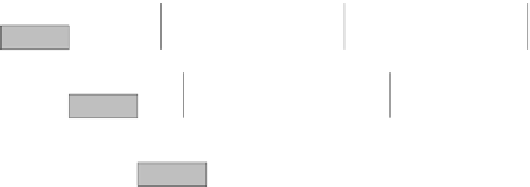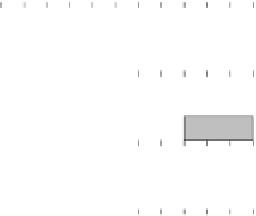Hardware Reference
In-Depth Information
(
C
i
,T
i
)
τ
1
(3,8)
τ
2
(3,9)
deadline miss
τ
3
(3,12)
τ
4
(2,100)
Figure 8.6
An example of self-pushing phenomenon occurring on task
τ
3
.
Definition 8.1
The
Level-
i
pending workload
W
i
(
t
)
at time
t
is the amount of pro-
cessing that still needs to be performed at time
t
due to jobs with priority higher than
or equal to
P
i
released strictly before
t
.
Definition 8.2
A
Level-
i
Active Period
L
i
is an interval
[
a, b
)
such that the Level-
i
pending workload
W
i
(
t
)
is positive for all
t
∈
(
a, b
)
and null in
a
and
b
.
The longest Level-
i
Active Period can be computed by the following recurrent relation:
⎧
⎨
L
(0)
i
=
B
i
+
C
i
L
(
s−
1)
i
T
h
C
h
.
=
B
i
+
h
:
P
h
≥P
i
(8.2)
L
(
s
)
i
⎩
In particular,
L
i
is the smallest value for which
L
(
s
)
=
L
(
s−
1)
i
.
i
This means that the response time of task
τ
i
must be computed for all jobs
τ
i,k
, with
k
∈
[1
,K
i
], where
K
i
=
L
i
T
i
.
(8.3)
For a generic job
τ
i,k
, the start time
s
i,k
can then be computed considering the blocking
time
B
i
, the computation time of the preceding (
k
−
1) jobs and the interference of the
tasks with priority higher than
P
i
.


















Search WWH ::

Custom Search